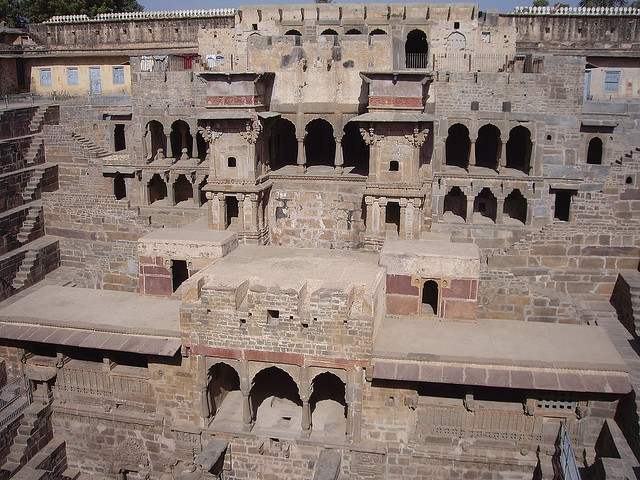Chand Baori (or "Chand Baoli") is arguably amongst the most beautiful step wells in India. It is believed to have been built during the 8th - 9th centuries AD under the patronage of King Raja Chand, a Nikhumba Rajput who ruled the area.
The reasons behind the building such an elaborate step well is not fully clear. Some believe it was used as a water harvesting site. Others believe it could have served religious purposes based on the two carved niches containing rock-cut images of Goddess Durga and Lord Ganesha. Regardless of its purpose, it is difficult to describe the beauty of Chand Baori.
The Chand Baoli is built on a square plan with 3,500+ symmetrically laid out steps going down 13 levels (and likely a few more levels below the water table) to a depth of 20 meters. The steps surround the well on three sides while the fourth side has a set of pavilions built one atop another. The side that has the pavilions have niches with beautiful sculptures including religious carvings.
Some have described the overall visual effect is that of an Egytian pyramid turned upside down.
Chand Baori is now a treasure managed by the Archeological Survey of India ("ASI"). While there is a palace that flanks the baori, it is in a state of disrepair and the star attraction is clearly the baori itself. There is no Entrance Fee to visit this monument.

